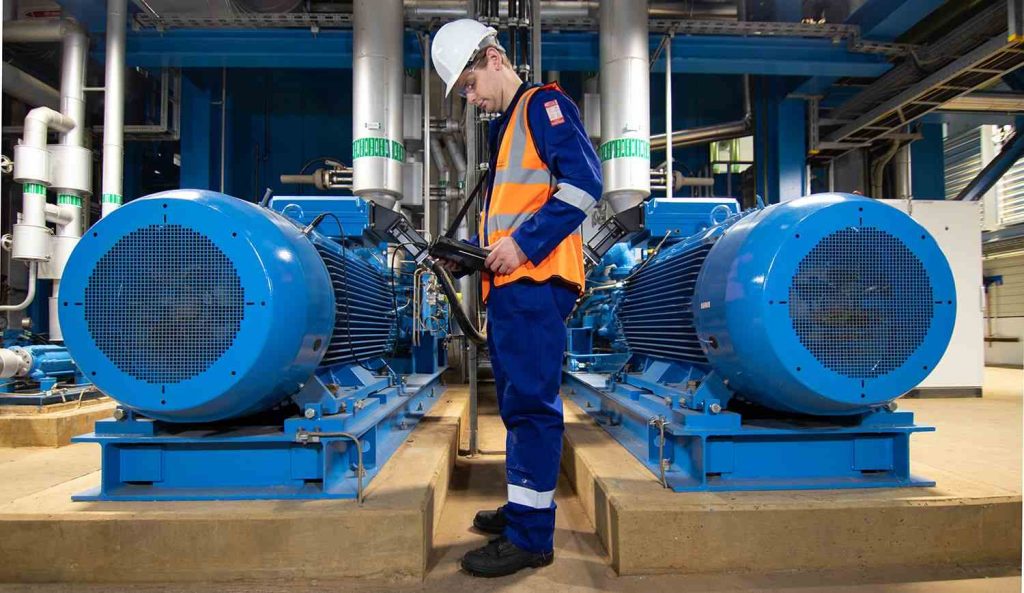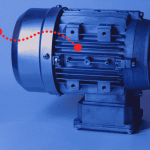Rotating machines tend to vibrate, so vibration analysis on a regular basis is needed to predict the operational health of equipment and provide fault analysis. It’s the job of the maintenance engineer to provide a preventive maintenance program, including using the concepts of vibration analysis.
Based on characteristics, criticality, and function, each part of a machine requires uniquely designed care and attention. Machine failures can be drastically reduced by adopting a “Preventive Maintenance Tool” program, which can also be known as a “Condition Based Maintenance System.” The aim of Vibration Analysis is to determine the deteriorating condition of equipment before it leads to a breakdown. Whenever machine vibration crosses normal limits, it indicates some problem in the mechanism, which could involve alignment, wear and tear, or loosening of parts. To overcome this, corrective action should be undertaken based on the data collected from the machine.
Implementing a Vibration Analysis Tool
Basic steps involved are:
1. Detection (vibration measurement and data trending based on a planned maintenance schedule)
2. Analysis (problem location finding out based on vibration characteristics)
3. Corrective action (remedy of the erratic part by replacement or adjustment)
Critical machines should be monitored by installing permanent type vibration meter on the required part. This should give signs of wear and tear to be rectified well in advance before the fault converts into an expensive problem.
Methods to Describe Vibration
An engineer can identify something erratic in equipment by feeling the heat, or by listening to the noise, or by watching the device’s status. It may vary person to person. Therefore the vibration analyst should put his faith in reliable methods that produce written data.
Amplitude and Frequency are measurable parameter to describe the vibration.
Amplitude: Severity of Vibration
Amplitude describes the amount of vibration noted on the object. More movement means more criticality of the object condition. Velocity or speed shall be measured in a specific direction in terms of peak value or rms (root-mean-square) value. Its unit is in/s or mm/s.
Vibration data shall be displayed in the form of trend called the waveform. Example trend of velocity waveform: Click here velocity waveform
At given time how fast the object movements take place is displayed in graphical waveform. Vibration analysts shall measure velocity data for specified time period and should carry out analysis accordingly.
Frequency: Oscillation rate of Vibration
A machine may oscillate fast or slow depending on the vibration. The rate of machine part oscillation is called the vibration frequency. The number of oscillation cycles per second is defined as the frequency, e.g. 3 cycles per second (Hertz) or 3 cycles per minute.
Spectrum: It is combination of the frequency of component vibration and velocity amplitude measured at that time. Click for trend overview: spectrum trend
The velocity spectrum of a vibrating machine indicates at “X” speed the object is vibrating with “Y” frequency. For example, the equipment is vibrating at a frequency of 75 Hz with an velocity amplitude of 10 mm/s. Considering both the frequency and related amplitude, we can find out the cause of the vibration and the machine health.
How to Take a Vibration Measurement
Make a list of machines
The maintenance engineer should prepare a critical equipment list, considering the application and usage of each machine. Equipment more critical for plant operation should be given first priority. Also history cards that indicate frequent and repetitive type of problems should be given priority for vibration analysis. An engineer should keep all vibration data as records for predictive maintenance analysis.
Understand the vibration sensor
A sensor generates an electrical signal which will be proportional to the acceleration of the vibrating object on which the sensor is fixed. The vibration meter converts the sensor signal to a velocity signal. The analyst can select instrument mode either for waveform or spectrum.
Most of the machines in industry are of a rotating type having bearings on a shaft. Damage to the machine also starts from parts adjacent to the bearings. Vibration measurement signals should be taken from bearing area on regular basis, so the accelerometer should be attached as near as possible to the bearing.
A sensor should be fixed firmly to the vibrating object as otherwise it may give wrong feedback. Most of the sensors will have a magnet for proper attachment with the object. The surface of the object should be even, free of debris, etc.
An engineer should prepare the vibration reading format containing three locations: vertical, horizontal and axial. Also the maintenance engineer should take care to mount the same sensor in the same location every time. The signals may distort if measured from a flexible part of surface. Human safety during vibration measurement, of course, is a key concern for maintenance personnel.
Conclusion
A vibration analysis tool successfully diagnoses and pinpoints erratic operation conditions well in advance in order to prevent severe breakdowns. The methods described above for vibration analysis are very useful. The number of breakdowns can be reduced by planned diagnosis of abnormalities, resulting in cost savings. Vibration Analysis is a part of Non-destructive Testing.



Comments are closed